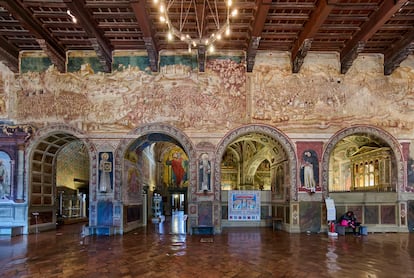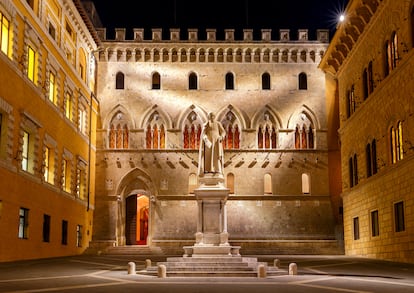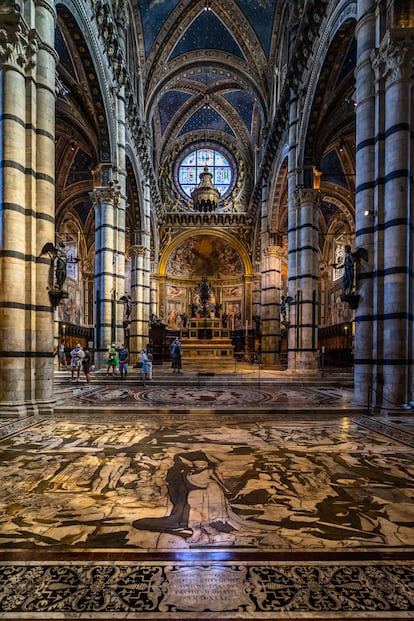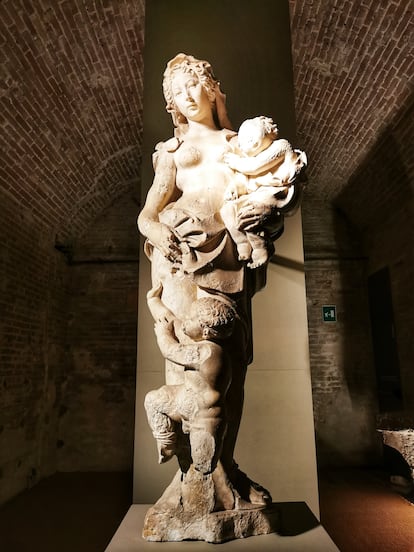A day trip is enough to make Siena a captivating city for culture lovers and lovers of good wine. Nestled in the heart of Tuscany, some 80 kilometers south of Florence and east of the Metalliferous Hills, it was described by UNESCO as “a masterpiece of dedication and inventiveness in which the buildings were designed to fit into the urban structure”.
Its first historical records date back to its occupation by the Etruscans (900 BC to 400 BC). This town settled in the hills of Tuscany and gave an evolutionary turn to the region through the use of irrigation that made the land arable. Years later, the Etruscans were defeated by the Romans, who had superior military techniques. The founding of the city led by the Romans in the time of Emperor Augustus gave way to its greatest splendor in the Middle Ages, when it became the Republic of Siena.
The early hours of the morning
Taking advantage of Siena in a few hours is feasible, because this is a small and ideal destination for walking. To get there there are two options: travel by train leaving from a city in Italy or rent a car to take advantage and also explore Tuscany by road. In my case, I stayed in Florence and from this city I left on a train from the Santa Maria Novella station. Tickets are purchased directly from the machines at the station or in advance on the website. TrainItaly, and have an approximate cost of 10 euros. In just over an hour, you reach Siena.
Piazza del Campo
The tour begins in the emblematic Piazza del Campo, located in the heart of the historic center and considered the icon of the city. Its aesthetic beauty is due to its particular shell-shaped design, its spaciousness and the historic buildings that guard it: the Communal Palace, the Gaia Fountain (a Renaissance masterpiece) and the Torre del Mangia, which stands out for its view. its 88 meters high. This square is also of great relevance for being the scene of the Palio, a horse race of medieval origin and one of the most famous events in Italy. It is celebrated twice a year: on July 2 (in honor of the Virgin of Provenzano) and August 16 (in honor of the Virgin of the Assumption).
The Civic Museum of Siena
This museum It is a surprise for its extensive collection of secular art from the 14th century, mainly frescoes and sculptures. My first recommendation is to go up to the Loggia de los Nueve, a panoramic terrace with views of the mountains and tile roofs that cover the city. In the Mappamondo Room you can admire two works by Simone Martini: Guidoriccio da Fogliano at the siege of Montemassi and the Maestà, one of the most important works of the 14th century that represents the Madonna with the Child surrounded by angels and saints. The Balia and the Concistoro also stand out.

A walk through the heart of the city
To step foot in this historic destination is to understand what a true architectural legacy from the Middle Ages is. So much so that UNESCO included, in 1995, its historic center on the world heritage list. considering it “the incarnation of the medieval city par excellence.” Its interconnected, cobblestone streets are surrounded by intact walls built between the 14th and 16th centuries. Walking calmly along its narrow paths is one of the first impulses of the day. Entering shops and artisan workshops where ceramists, leatherworkers and sculptors work is a genuine approach to the artistic heritage of the Sienese.
Easy access from the center leads to Piazza Salimbeni, located in the old town and surrounded by historic buildings such as Palazzo Salimbeni. The journey continues through the Basilica of Santo Domingo, located 800 meters away. This religious site was built in the 13th century and is in the Gothic style; Inside, the frescoes of the life of Santa Catalina stand out.

Lunch time
Sienese gastronomy is as rich as it is comforting due to its ancient recipes. Their dishes have a strong medieval, Renaissance and country heritage. Its cuisine is made up of meats, dairy products, vegetables, legumes, bread and various local products. Some of the most typical are the picia handmade pasta that is like big, thick spaghetti.
To eat an aperitif go to The Prosciutteriaa site that specializes in table
s of prosciutto, cheeses and sausages. In addition to their breads, fondues and carpaccio, which are tasted with their varied wine options. Another incredible option is Osteria II Vinaio, a traditional tavern where I tried the ribollite, a traditional soup of humble origin, famous for being one of the typical dishes of Tuscany. It is made from stale bread, vegetables and legumes. I liked it for its Mediterranean flavor and its high vegetable content. They also offer artisanal bread made in a wood-fired oven, sausages, fish and a large selection of wines. Many of their products and culinary ingredients are homemade, fresh and of high quality. Both sites are in the center, a few blocks from Piazza del Campo.
An afternoon at the Duomo
If I had to choose between my favorite religious sites in the world, I would point to the Siena Cathedral. The Duomo It was built between 1215 and 1263 in honor of Our Lady of the Assumption. Its Romanesque-Gothic and Florentine Gothic design is impressive, featuring enormous columns with alternating bands of white and dark marble. Its beauty is also reflected in the pavement: marble floors designed by Renaissance masters and decorated in detail with panels depicting biblical episodes. The interior houses artistic jewels such as statues of Michelangelo, Donatello and extraordinary stained glass windows.

One of its most valued corners is the Piccolomini Library. Its decoration with frescoes by Pinturicchio that appear on the walls and ceilings leaves anyone perplexed. In this enigmatic enclosure the rich heritage of books collected by Pope Pius II is preserved.
The monumental complex of Siena Cathedral also includes the Baptistery of San Giovanni, the crypt, the Panorama of Facciatone viewpoint and the Museo dell’Opera Metropolitana. To secure your entry and get a better price, a practical option is to buy the OPA Si Pass card which includes all access. This pass can be purchased at the cathedral box office or in advance. on-lineand has an approximate price of 19 euros.
Touring the cathedral will take you most of the afternoon, so if the hours last until later, it is worth entering the Santa Maria della Scala Museum, located in front of the Duomo. This former hospital is today a museum complex that treasures part of the history of Siena. Visitors admire works of art such as the frescoed Old Sacristy and the impressive Pilgrimage Room, with frescoes from the 15th century. Also in this area are the Corticella, dominated by the medieval granary, the Treasure of Santa María della Scala and labyrinths excavated in sandstone that house the National Archaeological Museum.

To close the night on a high note, a great idea is to continue tasting the region’s wines. The prestige of their labels is due to the areas in which they are produced: Brunello di Montalcino or Chianti, wine-growing areas located in the hills of Siena that produce exceptional wines. I chose the Winery Tirabusciò, a modest place, but with an extensive wine list and at good prices. Cheers to Siena!
Subscribe here to The Traveler newsletter and find inspiration for your next trips in our accounts Facebook, x and instagram.
#visit #Siena #medieval #city #par #excellence
